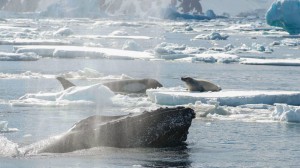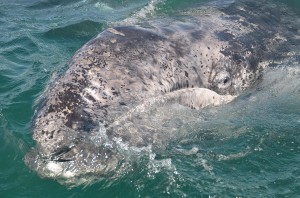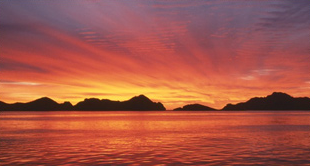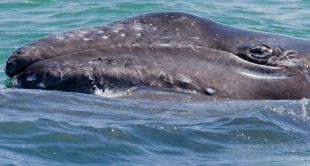Being there for others and supporting others – are whales altruistic?
Altruism is the principle of concern for the welfare of others – not about worrying about you, but to actually help others unconditionally. Today’s question is: Are whales and dolphins altruistic?
Antarctica. A group of Orcas is using one of their smart devised hunting methods: They swim together towards an ice floe and thereby create a wave, which lets the Weddell seal, which is resting there, slide into the water.
The lunch for the Orcas is prepared. But wait – it is not always that easy for the so called Killer whales. There is a Humpback whale coming closer, swimming underneath the seal, lying on its back and so providing a small island for the seal, which probably already completed with its live. A guardian angel disguised as Humpback whale.
But the danger is not yet passed away. As the seal is about to slide from the belly, the whale pushes the seal nearly tenderly back onto its saving body.
California. Every year we meet the “friendly” Gray whales in the Pacific lagoons. They conquer our heart very quickly, when they come directly to our small Mexican fishing boat and invite us, to touch them. The playful calves, biggest treasure and pain in the neck for the mothers at the same time, come with pleasure to the boats with the outstretched arms…
In April the time of the lagoon-kindergarten is over and the serious part of life is waiting outside of the lagoon and the whales start their long journey in the Arctic, where hopefully a large offer of food is waiting for these especially friendly whales. During their journey they pass along the Californian Coast, where also the Killer wales, which eat other warm-blooded animals and are waiting for their prey.
The Gray whale calves are especially popular among the Orca whales. In one case, human witnesses were observing, how killer whales pushed a calf under water, so that it drowns and gets tired in order to eat it afterwards. All the whale mother`s attempts to save her calve were futile and exhausting. The people on board of the research ship could not believe what they saw, as a small group of Humpback whales comes along and swims in between the Gray whales and the Killer whales and try to stop the Orcas from further attacks.
Unfortunately it was too late for the calf, but the Humpback whales stayed for 6 more hours close by… The Gray whale female swims alone to the North.
We will not be able to see the Gray whale calve again in of the lagoons. How sad! Nearly a third of the calves do not manage to reach their 1st birthday. However the stocks of the Eastern Pacific Gray population recover gradually in the years after the end of the whaling also due to the good and sustainable whale watching management in the lagoons.
I think our introduction question can be answered with a clear „yes“. Wouldn’t whales and their habitat also deserve to be protected better?
I would also answer that question with a strong “yes”.
Susanne Braack
Here the video to the second story
Susanne Braack
(picture: OCEANO MEERZEIT Reisen, Susanne Braack)
Fotos Robert Pitmann href=“http://www.sciencemag.org/news/2016/07/humpbacks-protect-seals-and-other-animals-killer-whales-why“>Article in Englisch here








